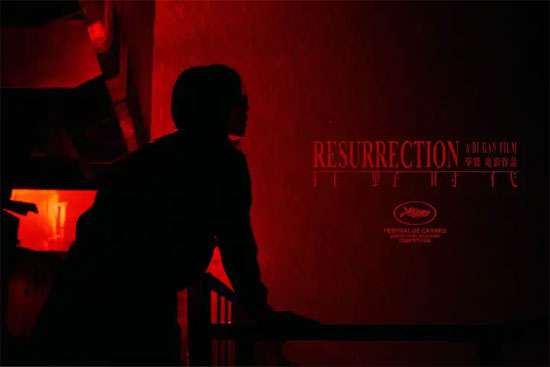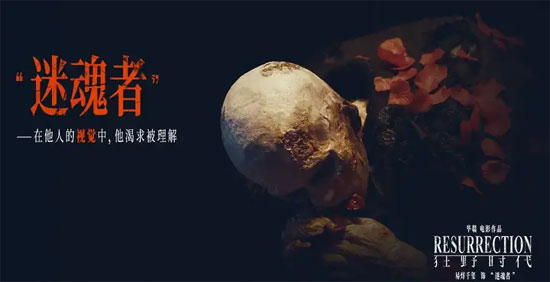Film Name: 狂野时代 / Resurrection
Last night I went to see “Resurrection.” I was the only one buying tickets. After the show started, a couple sat down in the front row, but they left halfway through. In the end, I was the only one left watching the entire film.
I think this perfectly encapsulates the film’s current polarized reception. At its core, it’s an intensely auteur-driven art film. Casual viewers without the right mindset or patience won’t buy into it (thankfully, it avoided the marketing deception of something like “Long Day’s Journey Into Night”). The bulk of the audience consists of a small group of Bi Gan fans and a large contingent of Yi Yangqianxi fans, and public opinion hasn’t spiraled into uncontrollable backlash).
Even having watched the entire film, I can only offer a polite refusal: “I understand it, but I don’t like it—though I respect it.”

Therefore, this article aims more to share my impressions and thoughts on “Resurrection,” along with reflections on the plight of such art films.
First, I must admit that if viewed as a film “showcasing technical expertise and cinematic craftsmanship,” Resurrection offers rich, abundant content. Whether it’s the dream-weaver and the captor archetypes or the five chapters woven through a lyrical narrative, it exudes sophistication.
Even if you don’t grasp everything, the sophisticated cinematography and masterful audiovisual transformations alone—like the color silent film in Chapter One, the snow-swept ruined temple in Chapter Three, or the single-take sequence in Chapter Five—will resonate with viewers who stick with it.
For those with some cultural background or open to analysis, it’s a feast: Lacanian theory, the Ferrandi mirror, “Tables Turned on the Gardener,” the theremin, inner sweetness and outer bitterness, scent recognition, the millennium New Year’s Eve, vampires—it’s all here. Watching Resurrection delivers the intellectual nourishment of three or four art films or genre pieces combined. Is that a bargain?

Following this characteristic, I should now explain why I dislike “Resurrection”: it’s a film where “emotional experience” far outweighs “rational logic” (this alone will deter most viewers). Even after letting go of my defenses and sensing glimpses of beauty in parts, the entire film still left me somewhat adrift—much like the dream within the film, unfettered yet inevitably fleeting.
The film uses the “Six Roots” to structure its chapters. Those familiar with “Monkey King” or who’ve played “Black Myth: Wukong” can roughly follow the narrative thread by associating the roots with: sight as joy, hearing as anger, taste as thought, smell as love, body as sorrow, and mind as desire.
Yet even without dissecting the Six Roots imagery, the film’s content feels decidedly haphazard in its pacing, creativity, and genre choices. Watching individual segments might hold up, but stringing them together creates a disjointed mess—no clear thread, no cohesive landing point… Fine, maybe it’s just my inner logic demanding coherence…
However, if we zoom out and examine specific stories, Resurrection does contain several standout episodes. Take Chapter Three, “The Son of Regret”—its scene-setting, narrative progression, and spiritual symbolism flow with remarkable smoothness and comfort.

This chapter begins with a hazy historical backdrop, gradually crystallizing into the inner demons of individuals through character actions and environmental shifts. When the son confronts the father-like “demon of suffering,” every few lines of dialogue deliver immense and brilliantly crafted information.
The line “If you see all forms as non-forms, you see the Tathagata” encapsulates a core truth of this chapter—and indeed the entire film: all forms are illusory. Only by seeing through all appearances can one see one’s true self.
Though “Resurrection” appears abstract and stream-of-consciousness, it diligently employs rich chapters and the opening/closing credits’ concise summaries to illustrate that “film is a dream” and “dreaming grows ever rarer.”
We often say cinema is a dream machine, that films extend human life, and so on. Yet the reality is, we no longer consistently—or perhaps have long since ceased—to associate “cinema” with “dreams.”

Therefore, even if I dislike this film and wouldn’t claim to have grasped much of it, I still respect and acknowledge the value of a film like Resurrection existing.
After all, in this era, it’s all too easy to dismiss an arthouse film as pretentious, affected, “trying to be something it’s not,” “out of touch with the masses”—all become valid criticisms. Even after watching it at Cannes, plenty who claim to have understood it still blast it. And let’s not even get started on the “high-risk keywords” like Yi Yangqianxi and some of his character photos (by the way, he actually did a pretty solid job this time, getting more into the groove—though it feels like it took a toll on him, which might not be sustainable long-term)…
When we talk about respect, what we truly hope for is to see more “different possibilities.”
Please specify:Anime Phone Cases » Resurrection 2025 Film Review: Movies are like a dream.